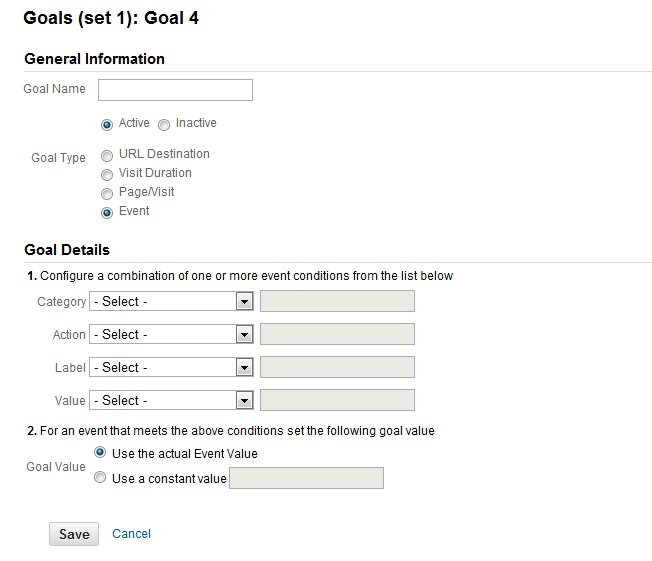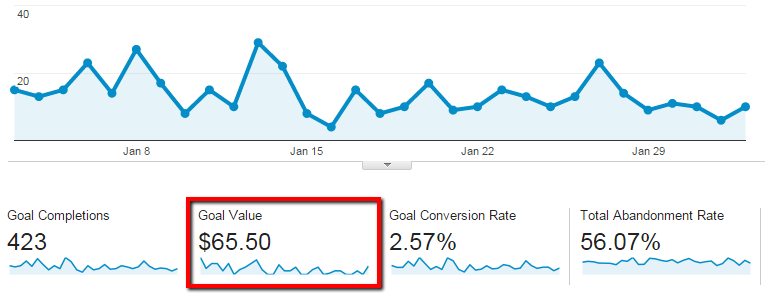Discover What Data Is Google Analytics Goals Unable to Track
Discover What Data Is Google Analytics Goals Unable to Track
Blog Article
Demystifying Google Analytics Limitations: Uncover What Information Goals Can not Track
In the world of digital analytics, Google Analytics stands as a powerful device that offers beneficial insights right into website efficiency and user habits. From the intricacies of individual communication with dynamic web content to the complexities of cross-device individual journeys, these restrictions lost light on areas that might stay obscured from typical analytics viewpoints.

Customer Communication With Dynamic Material
Customer communication with vibrant content plays an important duty in recognizing customer actions on websites and optimizing the overall individual experience. By tracking individual communications with vibrant material, website owners can acquire beneficial understandings into user engagement, preferences, and habits - what data is google analytics goals unable to track.
Google Analytics offers different tools to track customer interactions with vibrant material, such as event monitoring and online pageviews. Occasion tracking permits you to check particular user activities, like clicking a button or enjoying a video, giving data on just how individuals communicate with vibrant aspects.
Cross-Device User Journeys
Exactly how can modern analytics devices track the complicated paths customers take across numerous devices in their online trips? Cross-device user trips present a substantial difficulty for tracking and analyzing customer behavior precisely. As users engage with websites or applications using numerous devices such as desktops, tablet computers, and smart devices, it becomes important to understand exactly how they relocate between these systems to enhance customer experience efficiently.
Google Analytics faces constraints in tracking cross-device user journeys because of privacy worries and technical restraints - what data is google analytics goals unable to track. While it can offer understandings into specific tools' communications, tracking a seamless user journey throughout several gadgets remains a challenge. This limitation can result in insufficient information and fragmented individual insights, making it challenging for companies to create a unified view of the customer trip
To resolve this problem, companies can utilize advanced analytics tools that provide cross-device tracking abilities, enabling them to get a much more alternative understanding of individual habits. By leveraging these devices, organizations can bridge the gap in tracking cross-device user trips and maximize their electronic methods for a seamless customer experience.
Offline Conversions and Acknowledgment
As companies navigate the obstacles of tracking cross-device individual journeys, an additional essential element to consider is the world of offline conversions and attribution in the realm of information analytics. While Google Analytics offers important insights right into online user actions, it falls short when it comes to tracking conversions that take place offline. This constraint positions a significant obstacle for companies that have both online and offline sales networks.
Offline conversions, such as purchases made in physical shops or through telephone call centers, are crucial to comprehending the complete consumer journey. Without the capacity to attribute these offline conversions to details online communications, companies might have a hard time to accurately measure the influence of their electronic advertising and marketing initiatives.
To address this space, organizations can check out different services such as incorporating CRM systems with online analytics tools or making use of one-of-a-kind promo codes that can be mapped back to on-line projects. By linking the space between online and offline data, organizations can gain a much more thorough understanding of their customers' behavior and improve their total advertising methods.
Person Customer Identification
In the realm of data analytics, the ability to accurately determine private customers throughout different online touchpoints is a crucial difficulty for services looking for to customize and maximize their advertising and marketing strategies. While Google Analytics provides valuable insights into user behavior and communications, it drops brief in enabling the identification of specific individuals due to personal privacy problems and technological limitations. Google Analytics uses distinct identifiers such as cookies to track individual sessions and actions, but these do not equate to identifying specific customers in a personal feeling.

Data From Secure Pages
Regardless of the boosting prevalence of secure web pages on sites, obtaining information from these encrypted sources presents an one-of-a-kind obstacle for digital analytics platforms like Google Analytics. Secure web pages, indicated by HTTPS in the link, encrypt information traded between the customer's web browser and the website's server to ensure personal privacy and safety and security. While this security is important for safeguarding delicate information, it likewise poses restrictions for tracking customer behavior and event analytics information.
Google Analytics encounters obstacles in gathering useful source thorough information from protected web pages due to the file encryption methods in position. Because of this, certain data factors such as referral sources, keyword searches, and also some individual communications may not be completely recorded when individuals access a website via a protected connection. This constraint can impact the accuracy and efficiency of the data analysis, leading to spaces in understanding user behavior and preferences on safe and secure pages.
To browse this difficulty, electronic analysts may need to explore alternative tracking methods or take advantage of other tools particularly created to gather insights from protected pages. By adapting techniques to accommodate these limitations, companies can still derive important analytics despite the constraints presented by encrypted links.
Verdict
Finally, Google Analytics has limitations in tracking user communication with vibrant material, cross-device individual journeys, offline conversions, individual user recognition, and information from secure pages. These restrictions hinder an extensive understanding of user behavior and might go to these guys cause spaces in data evaluation. Regardless of its valuable understandings, Google Analytics may not offer a complete photo of user involvement across various touchpoints. It is important for companies to be familiar with these restrictions and consider extra tools for a more all natural view of their data.
Individual communication with vibrant content plays a crucial duty in understanding individual actions on internet sites and maximizing the total customer experience. By tracking customer communications with dynamic material, internet site owners can acquire useful understandings into user interaction, choices, and actions.
Google Analytics uses special identifiers such as cookies to track customer sessions and behavior, click reference however these do not correspond to recognizing individual users in a personal feeling.
As an outcome, certain data factors such as referral sources, keyword searches, and even some user interactions might not be completely recorded when users access a web site with a safe and secure connection.In conclusion, Google Analytics has restrictions in tracking individual communication with vibrant web content, cross-device customer trips, offline conversions, individual user identification, and information from safe and secure pages.
Report this page